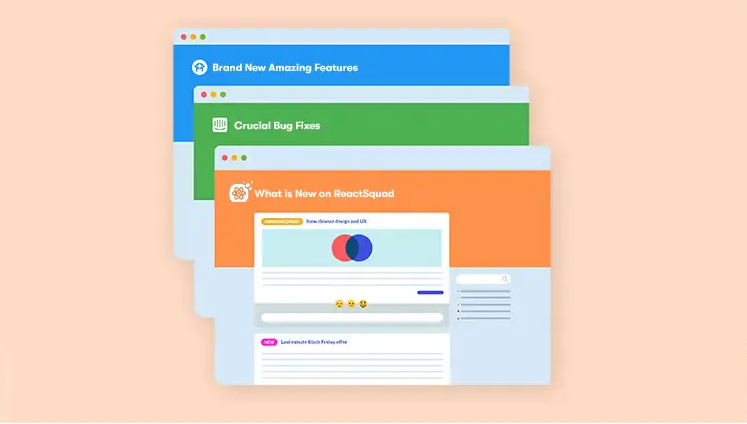Difference Between A Changelog and A Release Note

In the world of SaaS, you need to communicate effectively with users. 2 standard methods for documenting changes and updates in software releases are the changelog and the release note.
While these terms are often used interchangeably, they serve different purposes. This article will explore the key differences between a changelog and a release note and when to use what.
What Is a Changelog?
A changelog is a chronological record of changes made to a software application. It provides a detailed account of modifications, enhancements, bug fixes, and other updates implemented in each software version. The primary audience for a changelog is typically developers, project managers, and technical personnel involved in the dev process.
There are public changelogs designed to be shared with end users. This innovative approach enhances transparency and communication between SaaS companies and their users.
Key Features of a Changelog
Versioning
A changelog typically includes version numbers or tags, allowing devs to identify and track changes across different releases.
Detailed Descriptions
Each entry in a changelog provides a comprehensive description of the changes made in that specific version. This includes feature additions, improvements, bug fixes, security patches, and notable deprecations.
Chronological Order
The changelog presents the changes in chronological order, allowing users to understand the evolution of the software over time.
Technical Details
A changelog sometimes includes technical information such as code changes, API modifications, database schema updates, and other relevant technical details.
Importance of a Changelog
Collaboration
Changelogs foster collaboration among development teams by providing a clear overview of changes, allowing team members to work together effectively.
Debugging and Issue Tracking
Changelogs assist in debugging and issue tracking, as developers can refer to specific changes made in a particular version to identify potential causes of bugs or regressions.
Transparency and Accountability
Changelogs promote transparency and accountability by showcasing the efforts invested in improving the software and giving users insight into the development process.
What Is a Release Note?

While a changelog focuses on technical details and the development process, a release note targets end-users, clients, and stakeholders who need a concise summary of the changes in a software release. Release notes are user-oriented, highlighting the most significant improvements and enhancements in a user-friendly format.
Key Features of a Release Note
Highlights
Release notes focus on the most important features, updates, and enhancements end-users will find relevant and beneficial.
User-friendly Language
Unlike the technical language of a changelog, release notes are written in user-friendly language, avoiding technical jargon whenever possible.
Visual Enhancements
Release notes often include screenshots, GIFs, or videos to visually showcase new features or changes, making it easier for users to understand and adopt them.
Compatibility and Known Issues
Release notes may include information about system requirements, compatibility with different operating systems or platforms, and known issues or limitations that users should know before updating or installing the new version.
Importance of Release Notes
User Engagement
Release notes help engage users by informing them about new features, improvements, and bug fixes. This enhances the user experience and fosters a sense of trust and transparency.
Adoption and Feedback
Clear and concise release notes encourage users to explore new features and provide feedback, to improve the software.
Documentation
Release notes serve as a historical reference, allowing users to review previous updates and understand the evolution of the product.
Difference Between Changelogs and Release Notes
Understanding the differences allows software development teams to communicate effectively with internal stakeholders and end-users.
By providing detailed changelogs for technical audiences and concise release notes for end-users, teams can ensure transparency, collaboration, and user satisfaction throughout the software development process.
| Features | Changelogs | Release Notes |
| Audience and Purpose | Used by internal teams to announce software changes, focusing on technical aspects, bug fixes, and enhancements. | Intended for end-users, It highlights significant features, improvements, and updates in a user-friendly manner. |
| Level of Detail | detailed descriptions, including technical details like code changes, API modifications, and database schema updates. | Summarize the changes, highlighting the benefits and value of the update to end-users. |
| Language and Tone | Uses technical jargon, including code snippets, technical explanations, and references. | Written in plain language to engage and educate end-users, avoiding technical jargon whenever possible. |
| Format and Presentation | Changes and updates are listed chronologically, with version numbers or tags, and detailed descriptions. | Can be in different formats, such as a blog post, web page, or app notification. They often use visuals like screenshots, GIFs, or videos. |
| Focus and Emphasis | Keeping track of the development process, technical changes, optimizations, and bug fixes help debug issues and improve team collaboration. | Prioritizes end-user experience by highlighting improvements and features. They encourage engagement, adoption, and feedback. |
Changelogs are fantastic for promoting team transparency, collaboration, and accountability. This means they’re great for finding and fixing bugs, tracking issues, and showing how the software has evolved.
Release notes, on the other hand, drive user engagement, trust, and adoption by providing precise and user-friendly information about new features, improvements, and bug fixes.



